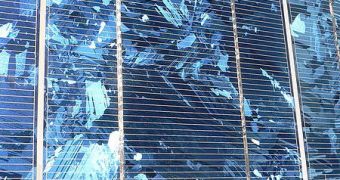The most important goal for all companies working in the solar power industry is to produce solar cells that are capable of attracting as much light as possible. The more photons strike a material, the more electricity is produced via this method, and all solar cell builders are currently trying to obtain a very high conversion rate. They are also looking for substances that would increase their products' effectiveness, in the sense that, once added to the cells, they would attract more sunlight. Selenium is widely considered to be one of those substances, e! Science News reports.
The reason why so many companies today are oriented towards improving solar energy production levels is the fact that many are beginning to realize that relying on existing fossil fuels is not a sustainable solution. Oil, coal and natural gases may be plentiful now, but the end of global reserves has already been approximated, and everything done to stretch stocks over time are only measures aimed at delaying the inevitable. Alternative power sources, such as sunlight, geothermal heat, wind and biomass, are the way to go, experts in the electricity industry say.
Vast amounts of carbon-free power may soon become possible, due to innovations being applied to the solar cell construction process. In the latest issue of the esteemed scientific journal Applied Physics Letters, experts explain how adding selenium to the coatings of solar cells could significantly improve conversion efficiency. The team is based at the US Department of Energy's (DOE) Lawrence Berkeley National Laboratory (Berkeley Lab), in California. The inexpensive technology calls for small amounts of the chemical to be added to zinc oxide, one of the most common materials in solar cells today.
“Researchers are exploring ways to make solar cells both less expensive and more efficient; this result potentially addresses both of those needs,” explains Marie Mayer, a PhD student at the University of California in Berkeley (UCB). She also holds an appointment at the Berkeley Lab, where she is conducting research into novel materials for sustainable clean-energy sources. The expert concludes by saying that selenium-enabled solar cells are just the stepping stone to a more important objective, which is creating zero-emission hydrogen powered vehicles.

 14 DAY TRIAL //
14 DAY TRIAL //